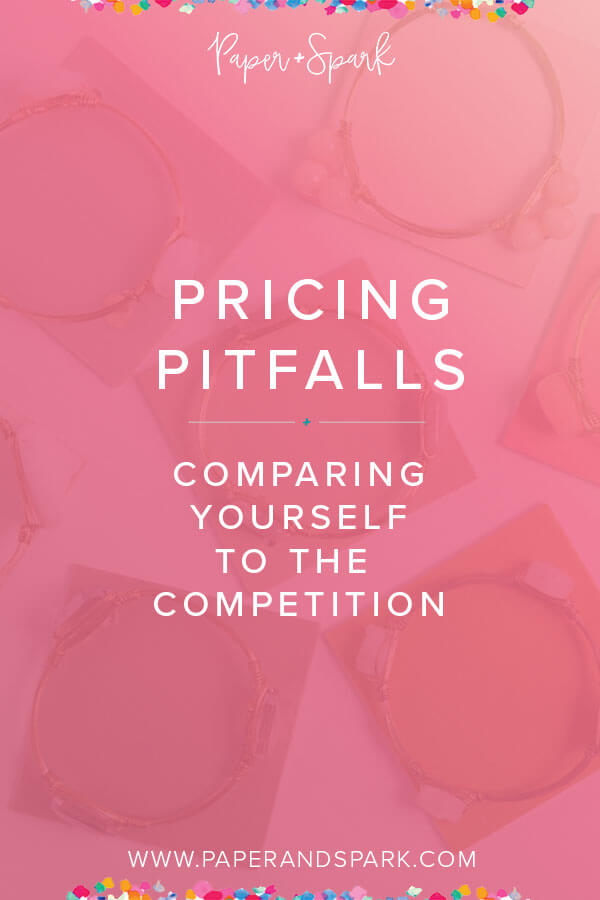
Pricing is such a hot topic in the creative biz world. As a numbers-driven accountant and a spreadsheet nerd, I find the topic and the various opinions surrounding it fascinating. But let’s get down to today’s business – too many Etsy shop owners, artisans, and crafty biz owners underprice themselves.
There’s a myriad of reasons why it happens – you feel guilty setting that price, you want to price your goods equal to or lower than your competition, or maybe you don’t even realize that your prices are far too low. Whatever the cause, underpricing and thus undervaluing is rampant in our industry.
Today I’m here to make a cause for why you should closely examine your prices and the logic behind them. I’ll use one simple example to show you that underpricing simply causes you to work harder for less profits. I will argue why underpricing yourself, for any reason, is a huge mistake that can quickly run your business into the ground.
PRICING TOO LOW – YOU’RE WORKING HARDER FOR THE SAME AMOUNT OF MONEY
Let’s use a lovely hand-lettered print as a very, very simplified example to show you the detriment of underpricing your stuff.
This is a hand lettered print for sale on Etsy via the lovely TheLetteringStudio. This print is just used as a photo of a hypothetical example in this post. The numbers below are all made up by me for example’s sake.
I’m going to use the pricing formula previously discussed in my past pricing post.
Direct Supplies – My high-quality archival paper costs me 75 cents per sheet.
Labor – It takes me 30 minutes to letter one print and I pay myself $12 an hour.
Overhead Rate & Indirect Supplies – My ink costs me $10 a jar, and the calligraphy pen costs me $20. I have $600 of other business expenses. I’m estimating that I will sell 250 prints this year, giving me an overhead rate of $2.40 ($630/250).
[(Supplies + Labor) x 2] + Overhead Rate = Wholesale Price
[($.75 + $6) x 2] + $2.40 = $15.19 for my wholesale price, x 2 = $31.80 for my retail price, or $32 flat.
Hmmm. I look at the result of my pricing formula, and maybe I feel a bit hesitant to charge $32 for my hand-lettered print. I do an Etsy search and it seems like everybody else is selling their prints for about $20. So, I’m going to try to compete with that and just sell it for $15, which is basically my suggested wholesale price per the formula. With this price, I’m even lower than my competition! Besides, $15 more than covers the cost of my supplies, so surely I’ll still be making good money, right?
To examine the consequences of using different price points, I’m going to say my goal for my business this year is to make $1000 in profit. Remember, profit means the money I make after I cover all my expenses. It’s a “net” number, not “gross”. In this example, that means I want to make $1000 after I cover the $.75 per print for paper, and the $630 of indirect supplies and business expenses (which is being pretty conservative, assuming I can make all those prints with just one pen and one jar of ink!).
Then, this is what I’m going to be dealing with:
Scenario 1– I sell my prints for $15 a pop. After doing a nice little equation ($15x -.75x – $630 = $1000) and solving for x, I’d have to sell about 115 prints this year to make a profit of $1000.
Scenario 2 – I sell my prints for $32 a pop (the retail price recommended by my pricing formula). To cover the same expenses mentioned above, I’d have to sell only 53 prints to make the same $1000 of profit. That’s less than half the prints in scenario 1.
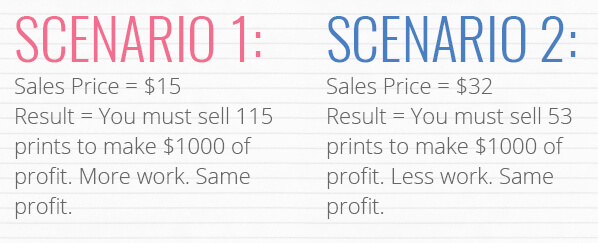
[Yes, there are a lot of assumptions and simplifications here, but the gist of it is still important.]
This is really quite an amazing example if you stop to think about it.
You can work twice as many hours and make 115 prints that sell for $15 each and make $1000 net income, or you can work for half as many hours and make 53 prints that sell for $32 each, still make $1000 in net income, and have loads more free time to make other products, do other business tasks, go the beach, drink tea, take naps, whatever.
It’s possible that underpricing your work can lead to a scenario where you’re working twice as hard for the same amount of money. Or less money. Or you could work the same amount and possibly double your income if your products are priced appropriately. There are many scenarios that could happen, but all outcomes point to the fact that pricing appropriately (i.e., high enough) is the smartest way to go.

Yes, I realize that the price of your product will directly affect the number of times it sells, and this example simplifies that issue. You might be afraid to set your price higher because that might decrease your sales…but you can sell fewer items and still make the same profit as if you had a lower price with more sales. You can even sell fewer items and make MORE profit than if you sold more items at a lower price. With the higher price, each piece you sell generates more profit. I’d rather work to make half as many prints, than do twice the work for the same amount of profit, wouldn’t you?
If you price too high, your product may look so unappealing that you can’t reach that profit goal. The goal is to find that happy price point between making the profit you need and pricing yourself out of the market. You want to work smart.
With this point in mind, I challenge you today to take a hard look at your pricing strategy. Your prices will determine whether or not your business is able to make a profit, no matter how many sales you’re making. So it’s really important for you to hunker down, examine your expenses, and make sure you’re pricing yourself for profit.
Are you confused about your pricing? Leave us your questions in the comments below!


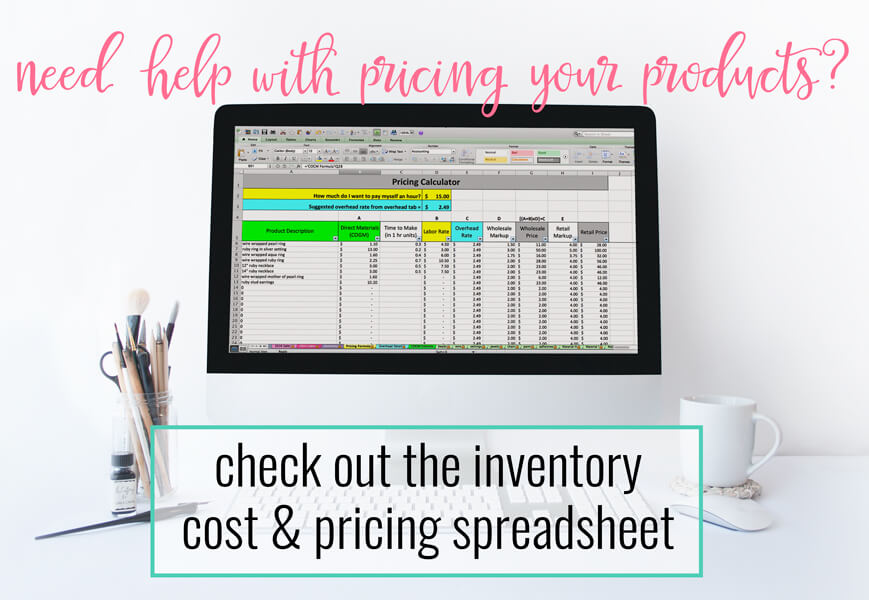
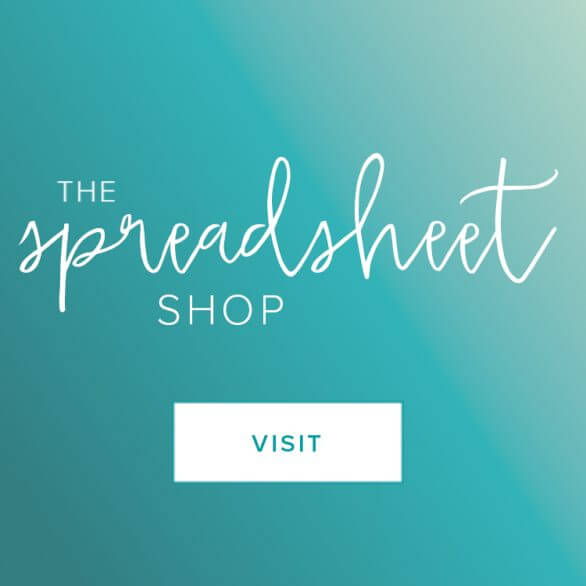
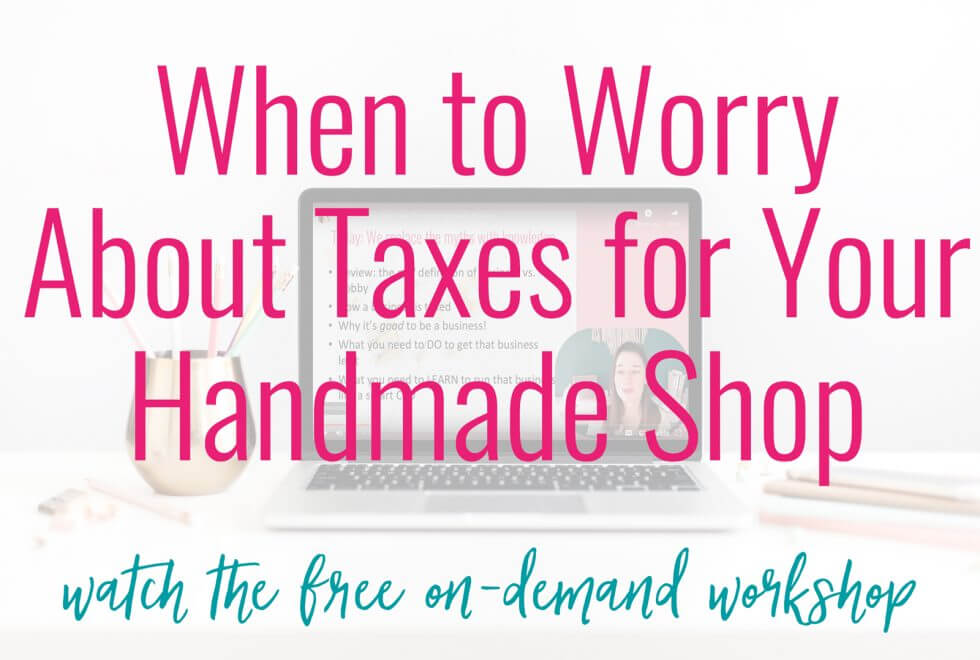

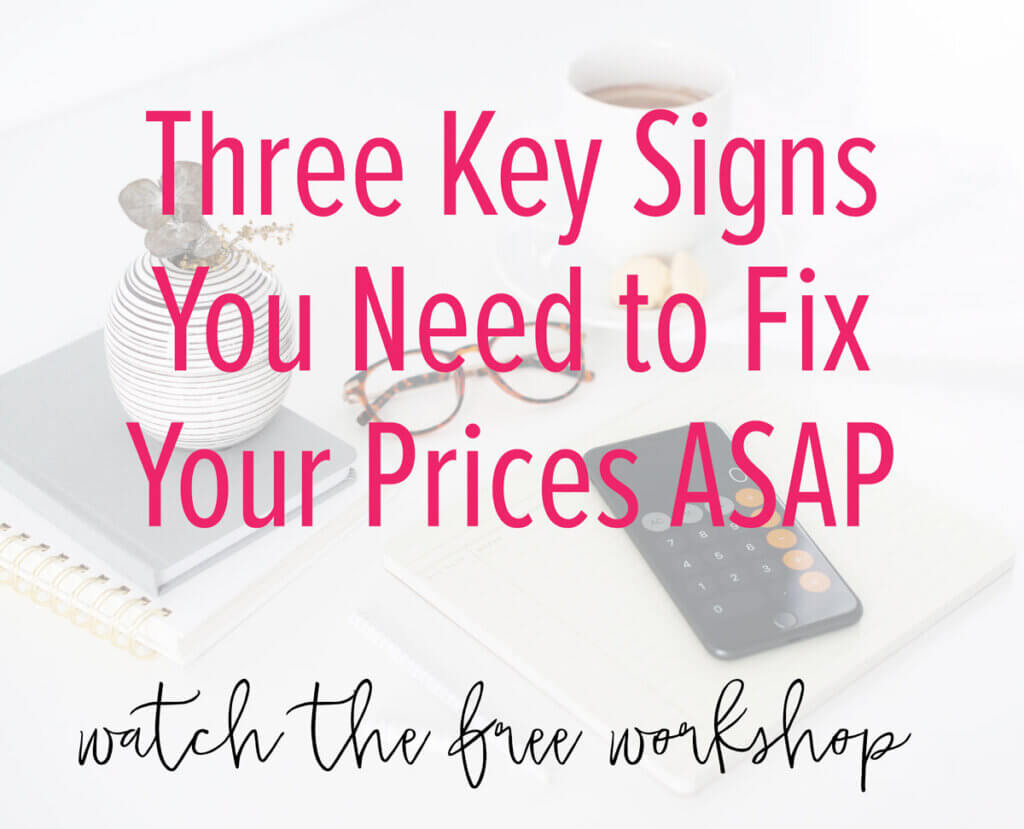

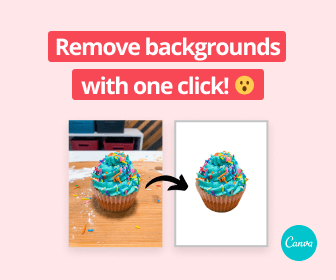
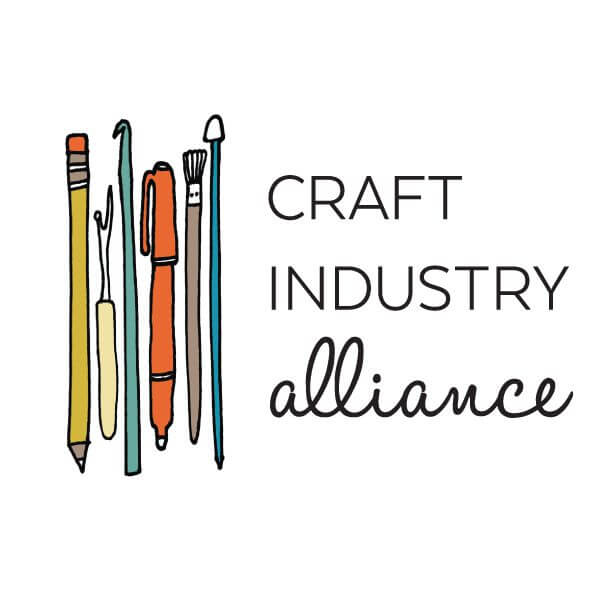



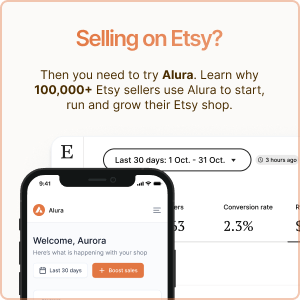

[…] been talking a lot about pricing lately, and in my last post I mentioned how so many creatives, makers, and artisans routinely underprice their handcrafted […]
Your product HAS to sell for you to cover your costs plus maybe a profit. .
If your product just gets compliments, you make $00
I’m a bit confused, I’m seeing two very pricing formulas on your site. The one on the pricing sheet i downloaded works great for my products, the supplies x 4 formula + labor + overhead. The other formula
Supplies + Labor) x 2] + Overhead Rate = Wholesale Price
[($.75 + $6) x 2] + $2.40 = $15.19 for my wholesale price, x 2 = $31.80 for my retail price, or $32 flat
Is very different as it’s multiplying labor by 2 as well and I end up with a way different price on my product.
What am I missing or not getting here?